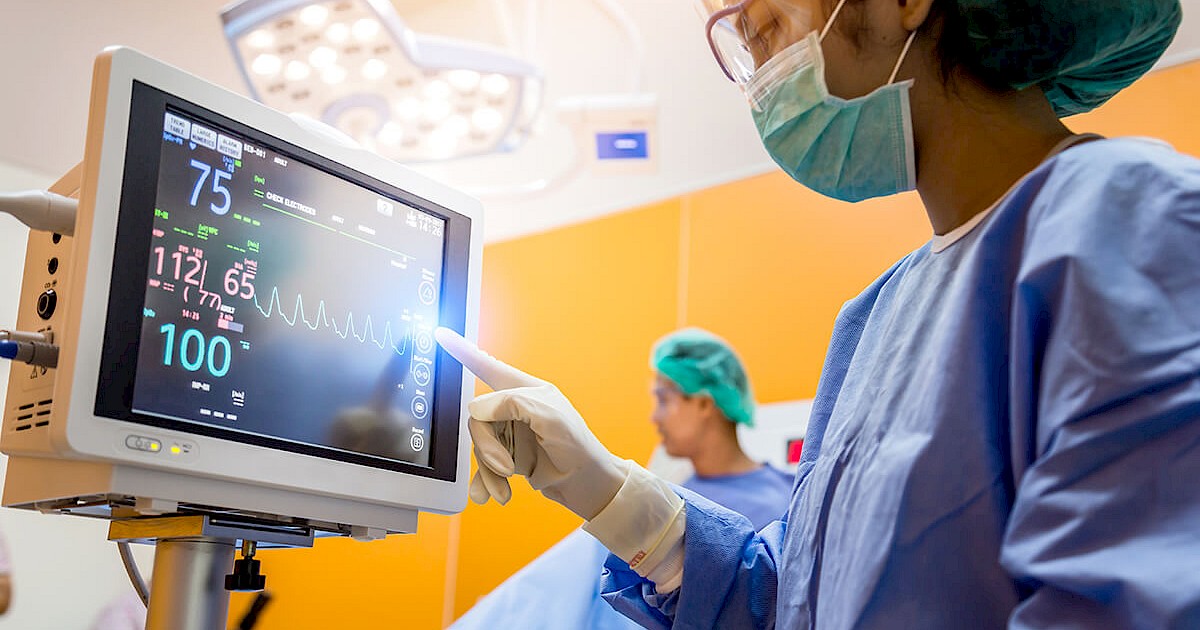Implementing New Medical Assets in the Age of IoMT

Smart technology has exploded in healthcare over the last few years. Current research estimates that in 2022, the Internet of Medical Things (IoMT) market is worth $158.1 billion. The IoMT refers to a diverse range of devices, such as smart insulin pens, wearable biosensors, EHR-enabled equipment, and other electronics used for medical purposes at home, and in clinical settings.
The IoMT can enhance patient outcomes and increase the efficiency of clinical and HTM staff. According to a Mayo Clinic study, remote patient monitoring with connected health devices enhanced recovery and prevented readmission in patients with COVID-19. The IoMT benefits providers with AI features and data analytics that can confirm diagnoses and offer medical decision support, supporting personalized, values-based care delivery.
The IoMT has a spectrum of onsite applications for hospitals, including connecting mission-critical biomedical devices such as infusion pumps and telemetry monitors with EHR and keeping clinicians informed. Implementing connected devices and device systems involves hardware, software, the biomedical equipment technicians (BMETs) that install and maintain those systems, and clinical and administrative staff. In this post, we’ll explore some basics for health technology decision-makers to consider about implementing new assets in the age of IoMT.
Factors to consider when implementing a new connected device system
What is the system’s purpose?
Connected biomedical device platforms range in price and complexity depending on the system's purpose and the hospital's needs. A smaller hospital, for example, doesn't need to push data to many people over a long range. Larger hospitals, however, might need to move data across a 3-building campus or farther.
Care settings also have differing needs for connectivity. Devices used in critical care settings have alarms that alert clinical staff about patient issues that need immediate attention. These systems require a fast signal transmission and a tiered notification relay. Lower-acuity care settings may only require notifications at the central nurse station.
Who needs to receive notifications?
Mid- to high-acuity care settings usually require a system with tiered notification capabilities. These systems include programming that responds to device alarms by initially notifying one set of recipients. If no one responds in a certain amount of time, the program sends out notifications to the following designated tier of recipients, and on to the other tiers until a response is entered into the system.
Sometimes notification configuration is based on the type of alarm triggered by the device; certain alarms might relay straight to the on-call doctor while others would relay through tiers of nurses.
Examples of notification tiers include:
- Central nurses’ station
- Nurse assigned to the patient
- All floor nurses on duty
- Patient's physician
- On-campus on-call physician(s)
- Off-campus on-call physician(s)
Comprehensive systems may also send alarm notifications from one type of biomedical device to another or integrate with EHR. These systems contribute to workflow efficiency when they eliminate the need for nurses and clinicians to write down or retrieve information or program separate devices in response to alarms.
What are the installation and maintenance requirements?
Generally, the more tiers and the wider the signal range, the more labor and equipment are needed. Small systems may require only one local server to pick up signals from devices and relay them to the central monitoring station, so they're easier and more affordable to install. Servers that provide a faster signal relay typically have more expensive hardware, making speed a factor in costs as well.
Comprehensive OEM systems like the Phillips IntelliVue and GE Apex Pro FH come with their own servers, simplifying installation and reducing the need for many different servers. Without a comprehensive OEM platform, connected devices require middleware, a specific piece of hardware that allows equipment made by different manufacturers for other purposes to communicate.
Middleware
Middleware is an electronic interpreter that can push notifications from a connected device server to a cell phone or pager of a nurse or doctor or to an EHR system or another device. More powerful middleware is needed to send signals between buildings or off hospital grounds, such as to an on-call doctor at their home.
Cybersecurity
Additional hardware isn't the only factor that increases the cost of complex, multi-server tiered systems. These platforms require more cybersecurity to prevent ransomware attacks and other types of cybercrime. The hospital IT department will need to get involved in both installation and maintenance. However, BMETs can also contribute to cybersecurity protocols.
Implementing new assets into an existing system
Most systems have a certain degree of built-in scalability, and newer connected OEM devices are usually backward compatible for several years. Middleware can help incorporate many types of devices, including comprehensive OEM platforms in some cases. However, in systems designed to connect large fleets of OEM devices, health systems do run the risk of a forced system-wide upgrade in the event that a specific model is discontinued.
Stockpiling
When an OEM sends a notice of device discontinuation, stockpiling is one way to defer the need for a complete system upgrade.
Stockpiling refers to purchasing backup devices to deploy when an older device breaks. Buying out the OEM's remaining stock or buying refurbished machines from an ISO are examples of stockpiling.
Third-party replacement parts
Using high-quality replacement parts can extend the longevity and ROI of biomedical equipment. Seeking out an ISO-certified USA manufacturer can ensure that a 3rd-party partner is making parts that meet or except OEM level quality.
Elite Biomedical Solutions is a proud USA manufacturer of OEM+ quality biomedical equipment parts. Parts made at Elite's ISO 13485 certified, FDA-registered facility can extend the lifespan of connected infusion pumps and telemetry systems. Contact us to learn more about partnering with Elite for exceptional parts and repair support.

